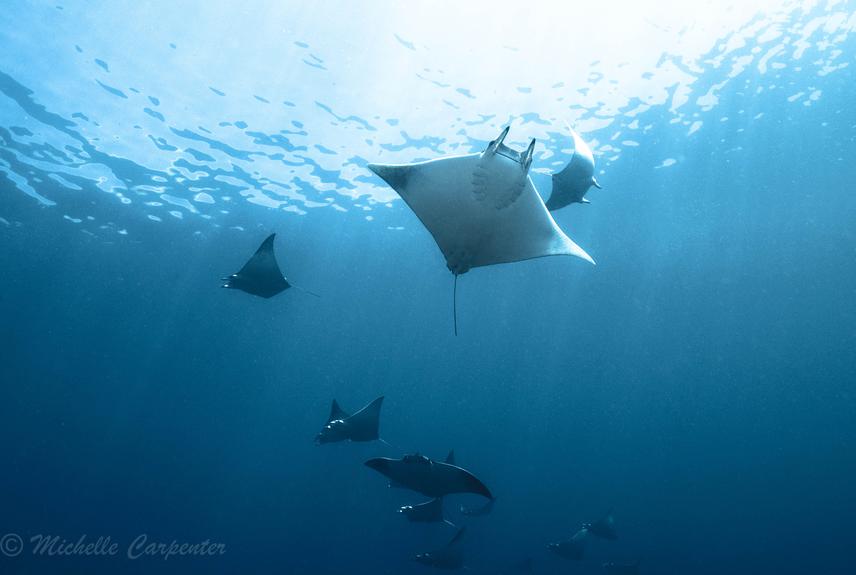Articles featuring the project.
GoodThingsGuy - Diver Discovers Large Group Of Highly-Endangered Devil Rays Off The Coast of Umkomaas! website.
South Africa Today - Unique Devil Ray Conservation Dive launched on the KZN South Coast!
14 Dec 2020 Bazaturto National Park, Mozambique, Africa Marine | Fishes | Habitats
Very little is known about the enigmatic shortfin devil ray, Mobula kuhlii, and the species is listed as Endangered by the IUCN. The objective of this research is to document two recently discovered critical sites for this ray species in Southern Africa. The sites will be identified and described by the discovery, description, monitoring, and behavioural observation of devil ray cleaning stations. This will be the first scientific report of shortfin devil ray cleaning station use and results will prove critical in increasing data to assess threats to this species, and influence policy and conservation management decision for them.

Devil rays.
Manta rays are world renowned for their use of cleaning stations and these reefs are the focal points for ecotourism and conservation. The devil rays, smaller species in the same genus and family (Mobulidae) as manta rays, are highly enigmatic, migratory, and understudied. Perhaps one of the most understudied of all is the Endangered shortfin devil ray, Mobula kuhlii. Globally, there are only ~30 published manuscripts with information on M. kuhlii, with most of these being taxonomic descriptions/redescriptions.
The main threat to mobulids is direct harvesting of their gill rakers for use in Chinese medicine and bycatch through unsustainable fishing methods including longlining, trawling, and gill nets (Couturier et al. 2012; O’Malley et al. 2016). Many specimens of M. kuhlii are unfortunately caught in the KwaZulu-Natal shark nets, indicating a possible high abundance of the species in the region, yet associated with great vulnerability to bycatch mortality (Dudley and Cliff 1993).
This work contributes to the knowledge and conservation of shortfin devil rays through the discovery of cleaning behaviour for the first time in this species, which will achieve both greater understanding of the species itself and how to protect them. This knowledge can be applied to local stakeholders through implementation of management plans such as a new form of ecotourism and reducing diver impact on this site through diver behaviour rules. Both the Bazaruto National Park and Aliwal Shoal are protected yet face threats of illegal fishing by night trawlers and gill nets/ghost nets. The discoveries of unique mobulid cleaning sites further supports the need for patrol and monitoring of these iconic places. This also contributes to the cause for removal of destructive shark nets, which threaten all Southern Africa’s mobile species.
Articles featuring the project.
GoodThingsGuy - Diver Discovers Large Group Of Highly-Endangered Devil Rays Off The Coast of Umkomaas! website.
South Africa Today - Unique Devil Ray Conservation Dive launched on the KZN South Coast!